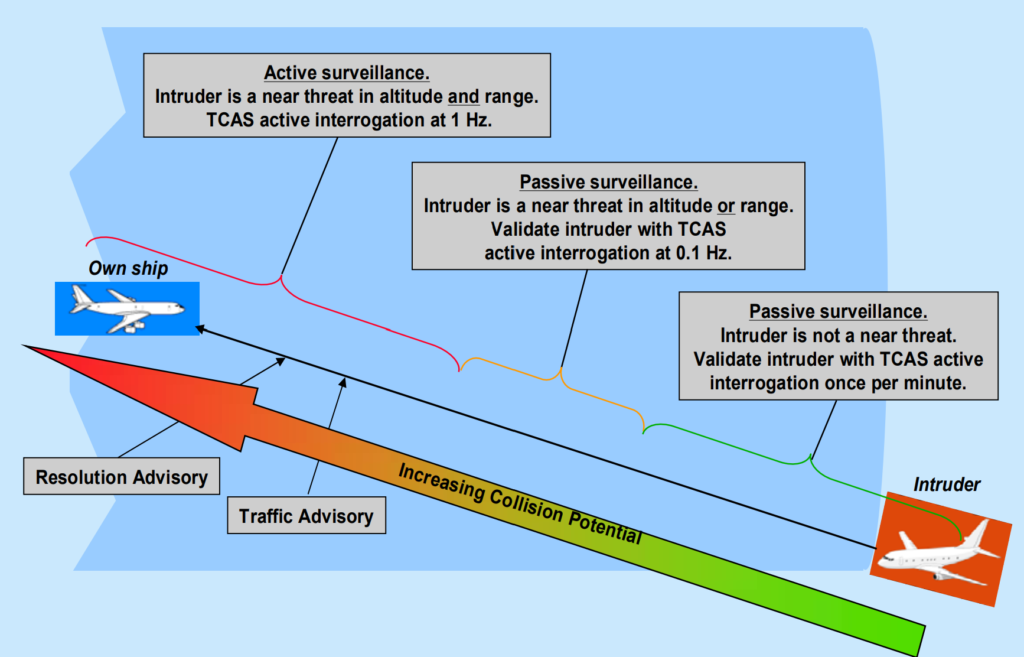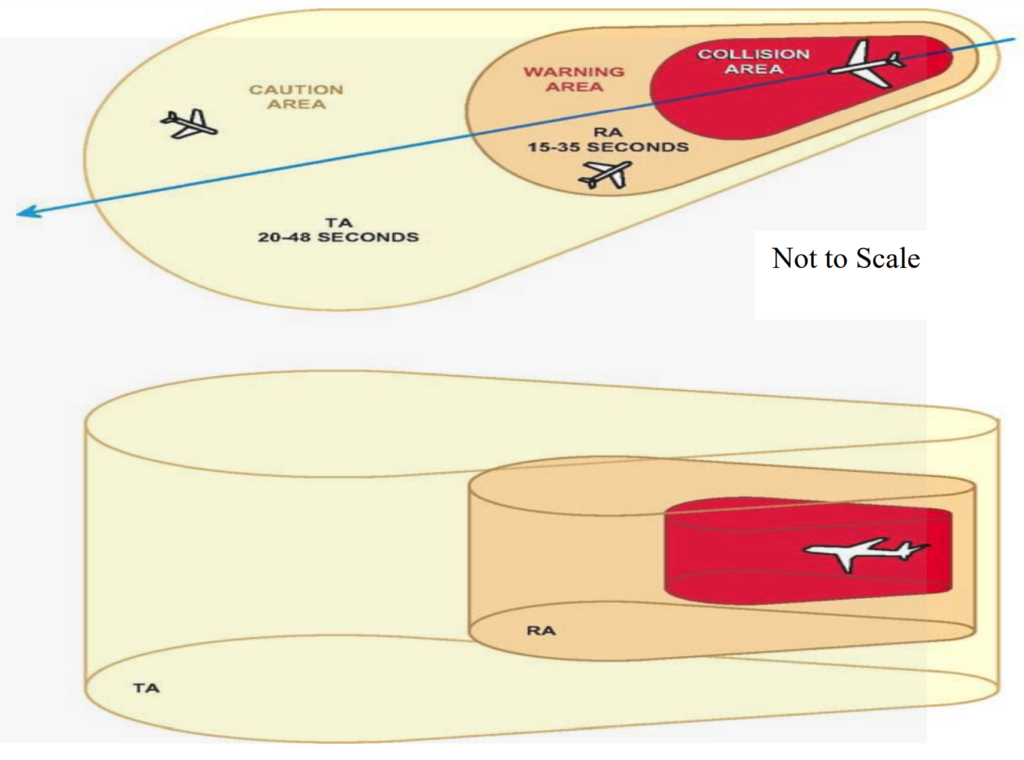TCAS stands for Traffic Collision Avoidance System. It is an airborne system installed in aircraft to reduce the risk of mid-air collisions. TCAS operates independently of ground-based air traffic control and provides collision avoidance guidance to pilots in the event of an imminent collision with another aircraft. The system works by exchanging data with nearby aircraft equipped with TCAS, determining their relative positions and trajectories, and issuing resolution advisories to pilots to maneuver their aircraft to avoid potential collisions. TCAS is a crucial safety feature, especially in congested airspace or in situations where aircraft are flying at different altitudes.
What is TCAS?
Traffic Collision Avoidance System (TCAS) is a special safety system installed on airplanes to help prevent them from crashing into each other while flying. It’s like an extra layer of protection in case other safety measures fail.
TCAS works by constantly scanning the airspace around the airplane using signals from nearby aircraft’s transponders. These signals help TCAS identify other planes that could be a potential danger. If TCAS detects a nearby plane that might get too close, it gives instructions to the pilots on how to avoid a collision.
The system is made up of different parts, including antennas and a computer unit. In modern planes, the TCAS information is often displayed on the cockpit screens, making it easy for pilots to see and follow the instructions to stay safe.
What Types of Advisories Provided by TCAS?
TCAS provides two types of advisories: Traffic Advisory (TA) and Resolution Advisory (RA).
-
- A Traffic Advisory is like a warning signal that alerts pilots to the presence of other aircraft nearby. It’s meant to help pilots stay aware of potential conflicts and take appropriate action to avoid them. Pilots might need to adjust their course or altitude to maintain a safe distance from other planes, especially in visual conditions or by coordinating with air traffic control in instrument conditions.
-
- On the other hand, a Resolution Advisory is a more urgent alert. It’s triggered when TCAS predicts that a mid-air collision could happen within the next 35 seconds. In this critical situation, pilots must respond immediately to the instructions provided by TCAS. During a Resolution Advisory, air traffic controllers are no longer responsible for keeping the involved aircraft safely separated. The RA might instruct one plane to climb while the other descends to avoid a collision.

TCAS Components
The Traffic Collision Avoidance System (TCAS) consists of several key components:
-
- Antennas: These are devices mounted on the aircraft to send and receive radio signals used by TCAS to detect other nearby aircraft.
-
- Transponder: Each aircraft is equipped with a transponder that broadcasts its own position, altitude, and other information to other aircraft and air traffic control radar systems.
-
- TCAS Computer Unit: This is the central processing unit of the TCAS system. It analyzes the information received from the transponder and other sensors to detect potential collision threats and issue advisories.
-
- Cockpit Presentation: The TCAS system presents advisories to the flight crew through visual and auditory cues in the cockpit. This could include alerts on cockpit displays or audible warnings to prompt the pilots to take action.
-
- Integration with Navigation Display (ND): In modern aircraft, the TCAS advisories may be integrated into the Navigation Display (ND), which is part of the aircraft’s avionics suite. This allows pilots to see TCAS advisories alongside other flight information on their primary flight displays.

Collision Avoidance Concepts – How TCAS Works?
The operation of collision avoidance systems relies on several key concepts, including sensitivity level (SL), tau, and protected volume. Here’s a simplified explanation of these concepts:
Sensitivity Level (SL):
-
- SL determines the level of protection and the thresholds for issuing Traffic Advisories (TA) and Resolution Advisories (RA) in collision avoidance systems.
-
- A higher SL provides a larger protected airspace and longer alerting thresholds but may lead to more unnecessary advisories.
-
- Pilots can select different operating modes on the TCAS Control Panel to adjust the SL:
-
- Standby Position (SL1): No transmissions are made, typically used on the ground or in case of TCAS failure.
-
- TA-ONLY (SL2): Surveillance functions are performed, and TAs are issued, while RAs are inhibited.
-
- TA-RA (SL3-SL7): TCAS automatically selects the appropriate SL based on the altitude of the aircraft, enabling both TAs and RAs as required.
Tau:
-
- Tau refers to the time-to-closest point of approach (CPA) between aircraft and is used to determine when TAs or RAs should be issued.
-
- Two types of tau are used: range tau (for horizontal separation) and vertical tau (for vertical separation).
-
- TCAS issues advisories when both the range tau and vertical tau are below certain threshold values, which depend on the SL.
-
- Modified definitions of tau are used to address encounters with low closure rates, ensuring advisories are issued in slower-closure-rate encounters.

Protected Volume:
-
- Protected airspace around TCAS-equipped aircraft is determined based on SL, tau thresholds, and aircraft parameters.
-
- TCAS provides protection by issuing advisories when intruder aircraft enter the protected volume, indicating a potential collision threat.
By adjusting the SL and using tau thresholds, collision avoidance systems effectively monitor airspace and issue timely advisories to prevent mid-air collisions.

